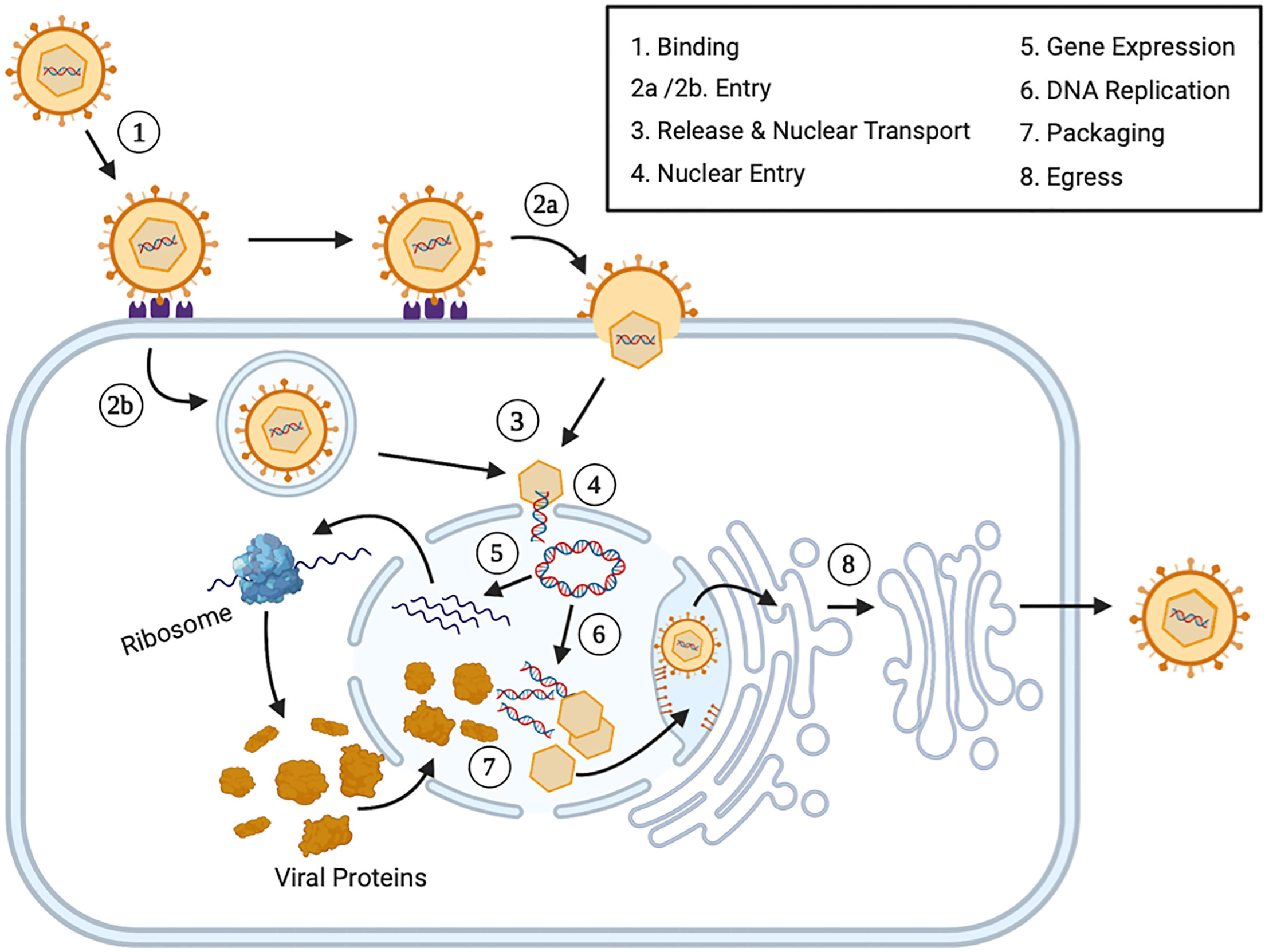
Frontiers Herpes Simplex Virus 1 Infection of Neuronal and NonNeuronal Cells Elicits Specific
Herpes simplex virus 1 (HSV-1) is responsible for herpes simplex virus encephalitis (HSE), associated with a 70% mortality rate in the absence of treatment. Despite intravenous treatment with.
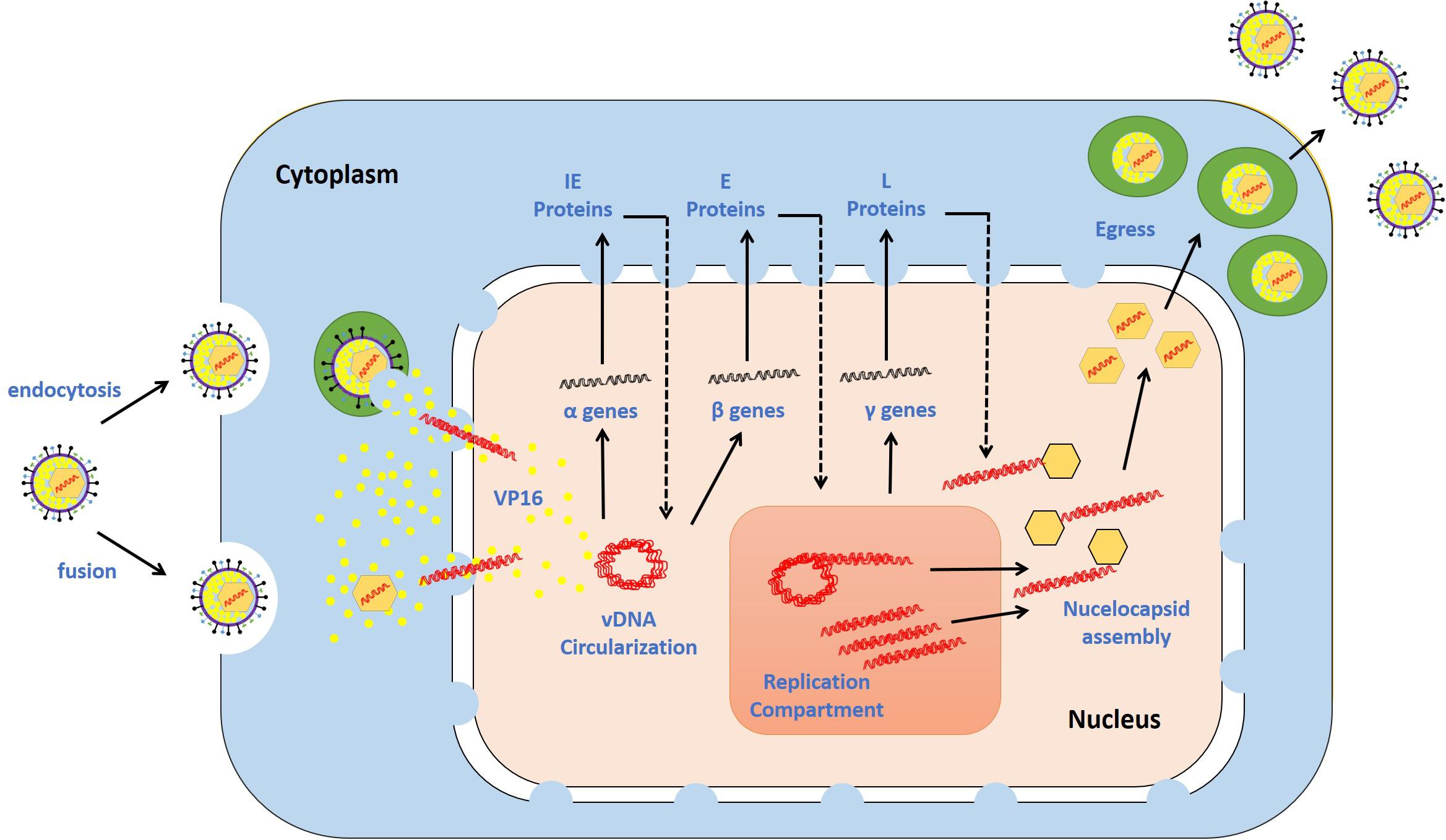
Frontiers Host Intrinsic and Innate Intracellular Immunity During Herpes Simplex Virus Type 1
Efeze 1:19-23 HSV. en wat de allesovertreffende grootheid van Zijn kracht is aan ons die geloven, overeenkomstig de werking van de sterkte van Zijn macht, die Hij gewerkt heeft in Christus, toen Hij Hem uit de doden opwekte en aan Zijn rechterhand zette in de hemelse gewesten, ver boven alle overheid en macht en kracht en heerschappij en elke naam die genoemd wordt, niet alleen in deze wereld.

Herpes simplex virus type 1 (HSV1) life cycle in the human host. After... Download Scientific
Herpes simplex virus (HSV), known as herpes, is a common infection that can cause painful blisters or ulcers. It primarily spreads by skin-to-skin contact. It is treatable but not curable. There are two types of herpes simplex virus. Type 1 (HSV-1) mostly spreads by oral contact and causes infections in or around the mouth (oral herpes or cold.
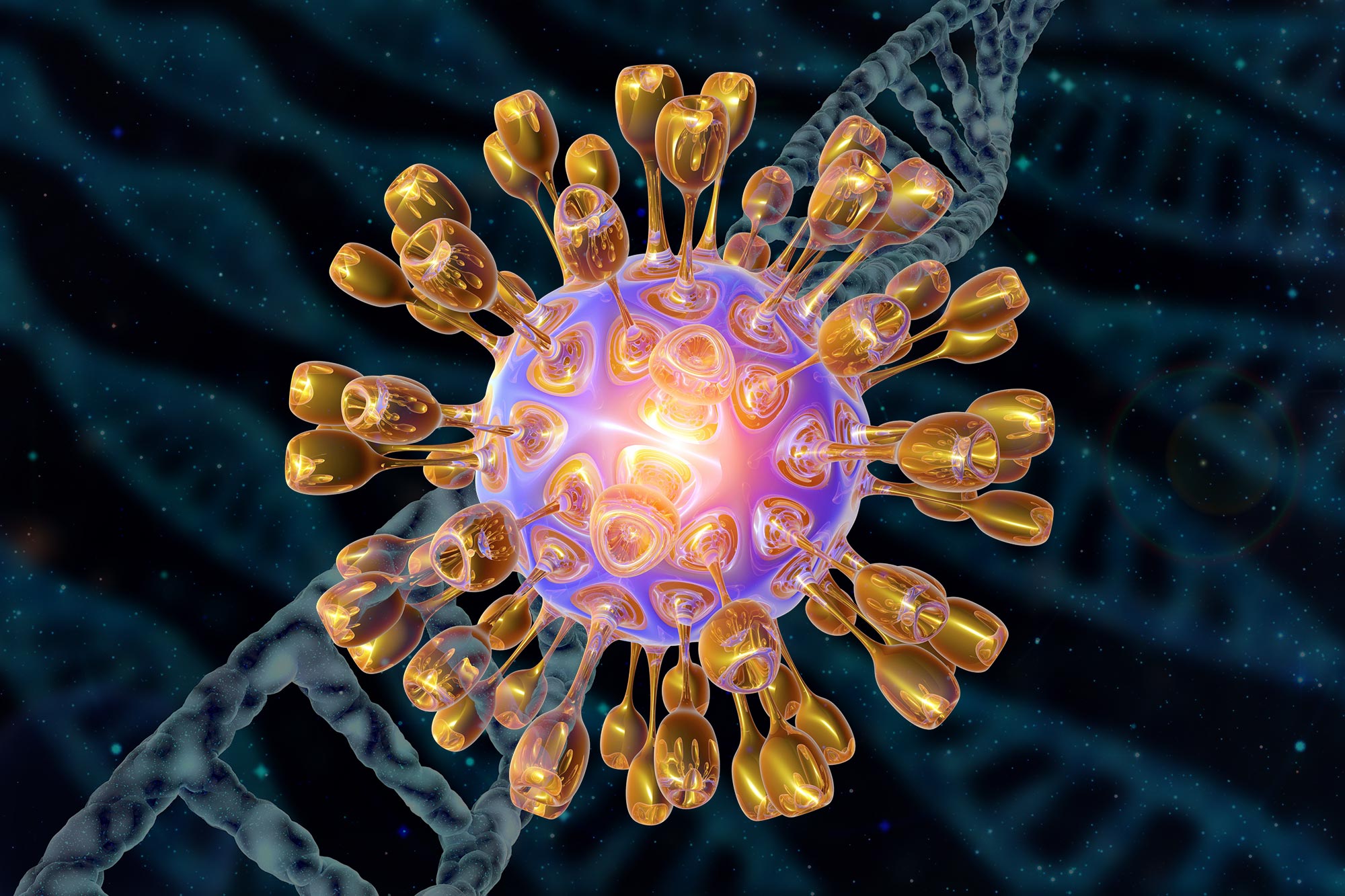
Herpes Simplex Virus 1 (HSV1) Decoded
Herpes simplex virus type 1 (HSV-1) and herpes simplex virus type 2 (HSV-2) are two highly contagious viruses that can cause outbreaks of watery blisters on the skin and mucous membranes of the mouth, lips, nose, genitals, rectum, and eyes.

HSV1 envelope proteins and their roles in entry and membrane fusion.... Download Scientific
66 Citations 114 Altmetric Metrics Abstract Herpesvirus infection initiates a range of perturbations in the host cell, which remain poorly understood at the level of individual cells. Here, we.

Efeze 1 Jezus christus, Jezus, Christus
Herpes simplex virus 1 (HSV-1) utilizes cellular RNA polymerase II (Pol) to transcribe its genes in one of two phases. In the latent phase, viral transcription is highly restricted, but during the productive lytic phase, more than 80 genes are expressed in a temporally coordinated cascade. In this study, we used Precision nuclear Run On.

The Role, Mechanism and Transcriptional Regulation of LAT in Herpes Simplex Virus Latency and
INTRODUCTION Herpes simplex virus type 1 (HSV-1) is a cause of recurrent vesiculoulcerative lesions of the oral or genital mucosa. It can also cause infection in the eye, skin, central nervous system, and/or visceral organs.
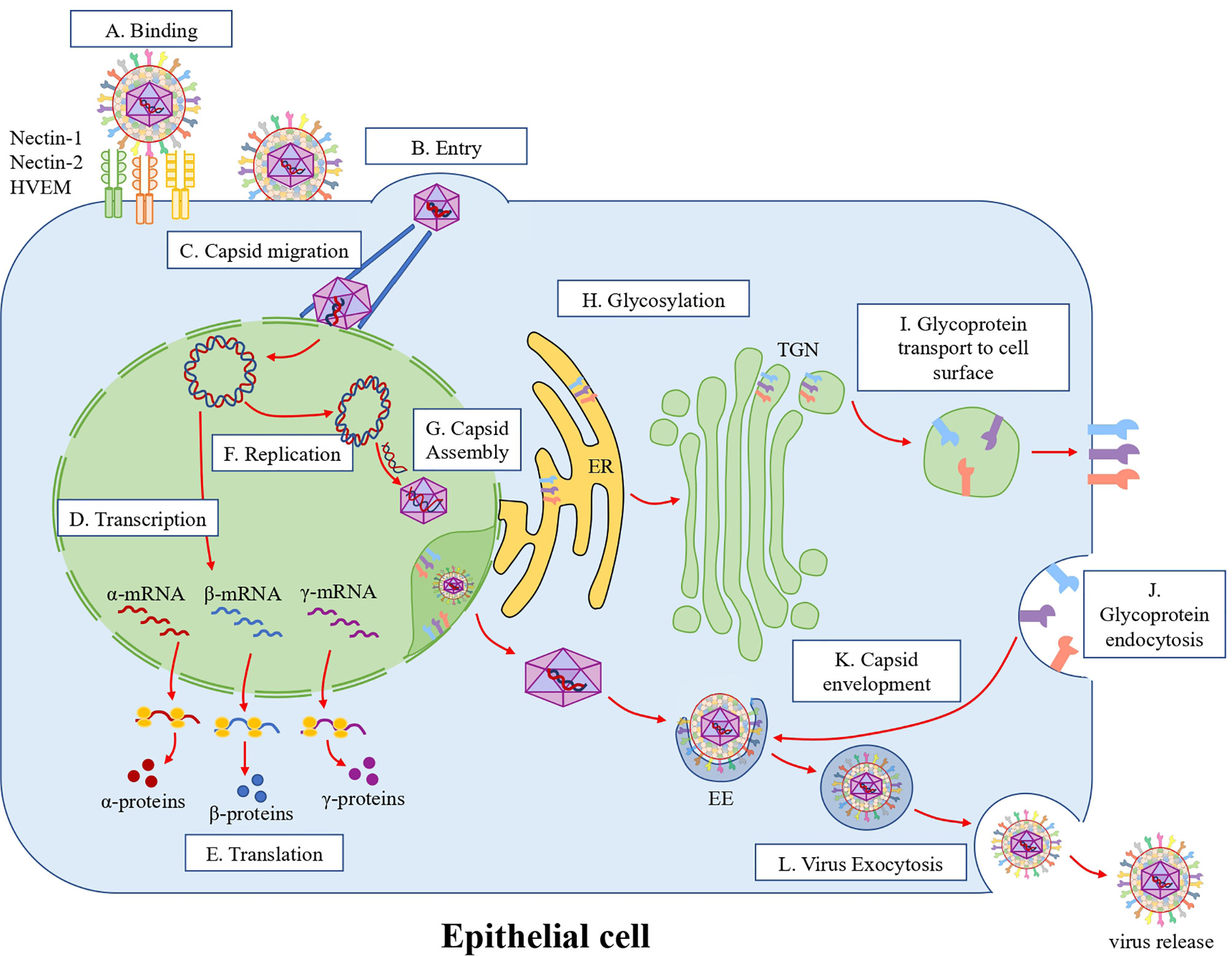
Frontiers Crosstalk Between Epithelial Cells, Neurons and Immune Mediators in HSV1 Skin Infection
Herpes simplex virus type 1 (HSV-1) is a member of the Alphaherpesviridae subfamily. Its structure is composed of linear dsDNA, an icosahedral capsid that is 100 to 110 nm in diameter, with a spikey envelope.
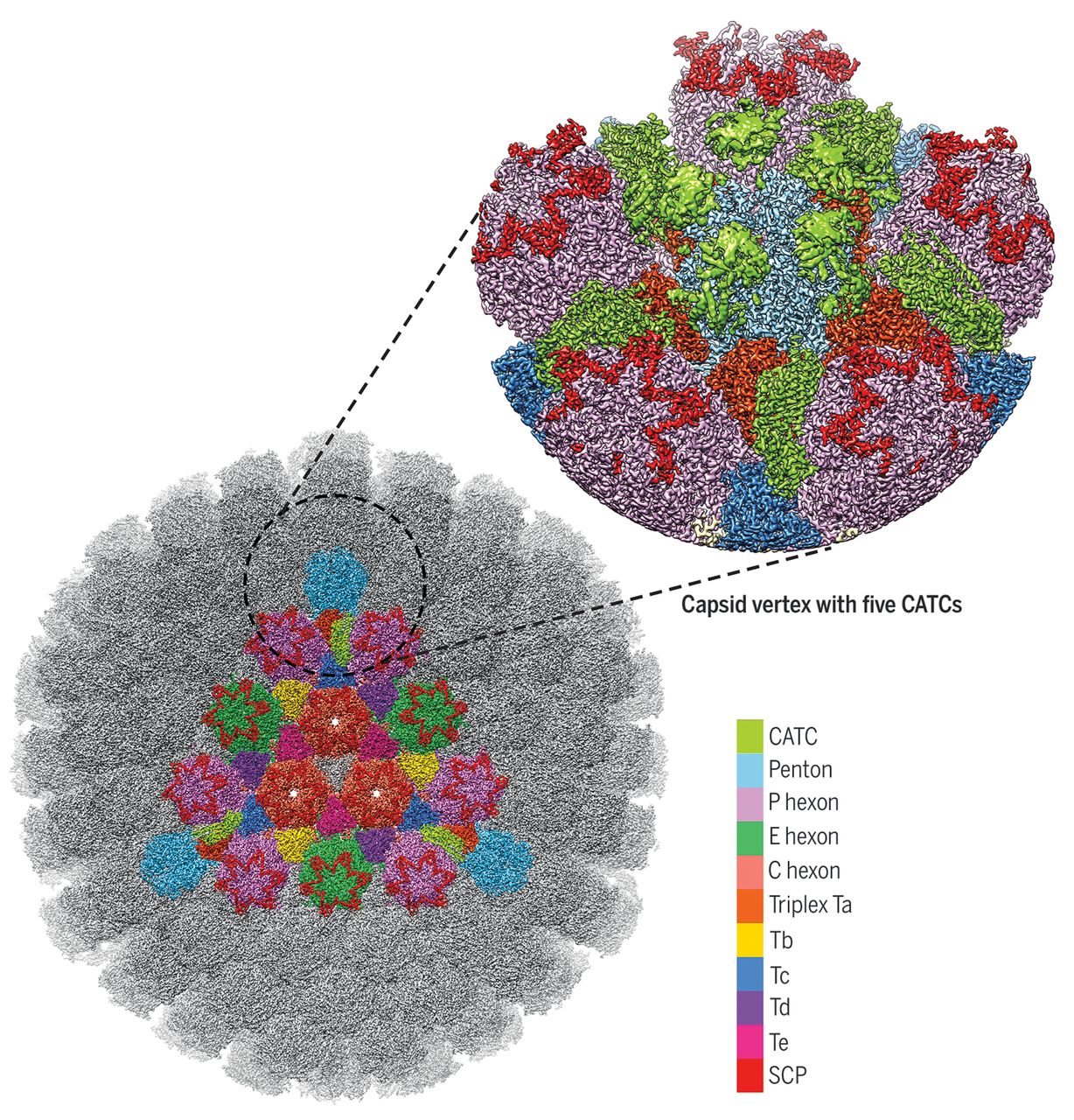
ThreeDimensional Structures of the Herpesvirus HSV1/HSV2 Capsid Revealed Creative
1 Wees dan navolgers van God, als geliefde kinderen, 2 en wandel in de liefde, zoals ook Christus ons liefgehad heeft en Zichzelf voor ons heeft overgegeven als een offergave en slachtoffer, tot een aangename geur voor God. 3 Maar ontucht en alle onreinheid of hebzucht, laten die onder u beslist niet genoemd worden, zoals het heiligen past,

Efeze (HSV) Stichting Nederland Gered
INTRODUCTION. Herpes simplex virus type 1 (HSV-1) encephalitis is the most common cause of sporadic fatal encephalitis worldwide. The clinical syndrome is often characterized by the rapid onset of fever, headache, seizures, focal neurologic signs, and impaired consciousness [].HSV-1 encephalitis is a devastating disease with significant morbidity and mortality, despite available antiviral therapy.

HSV1 Symptoms & Causes
Systemic or pulmonary reactivations of herpes simplex virus 1 (HSV-1) have been reported in critically ill patients with COVID-19, posing a dilemma for clinicians in terms of their diagnostic and clinical relevance. Prevalence of HSV-1 reactivation may be as high as > 40% in this population, but with large heterogeneity across studies, likely reflecting the different samples and/or cut-offs.
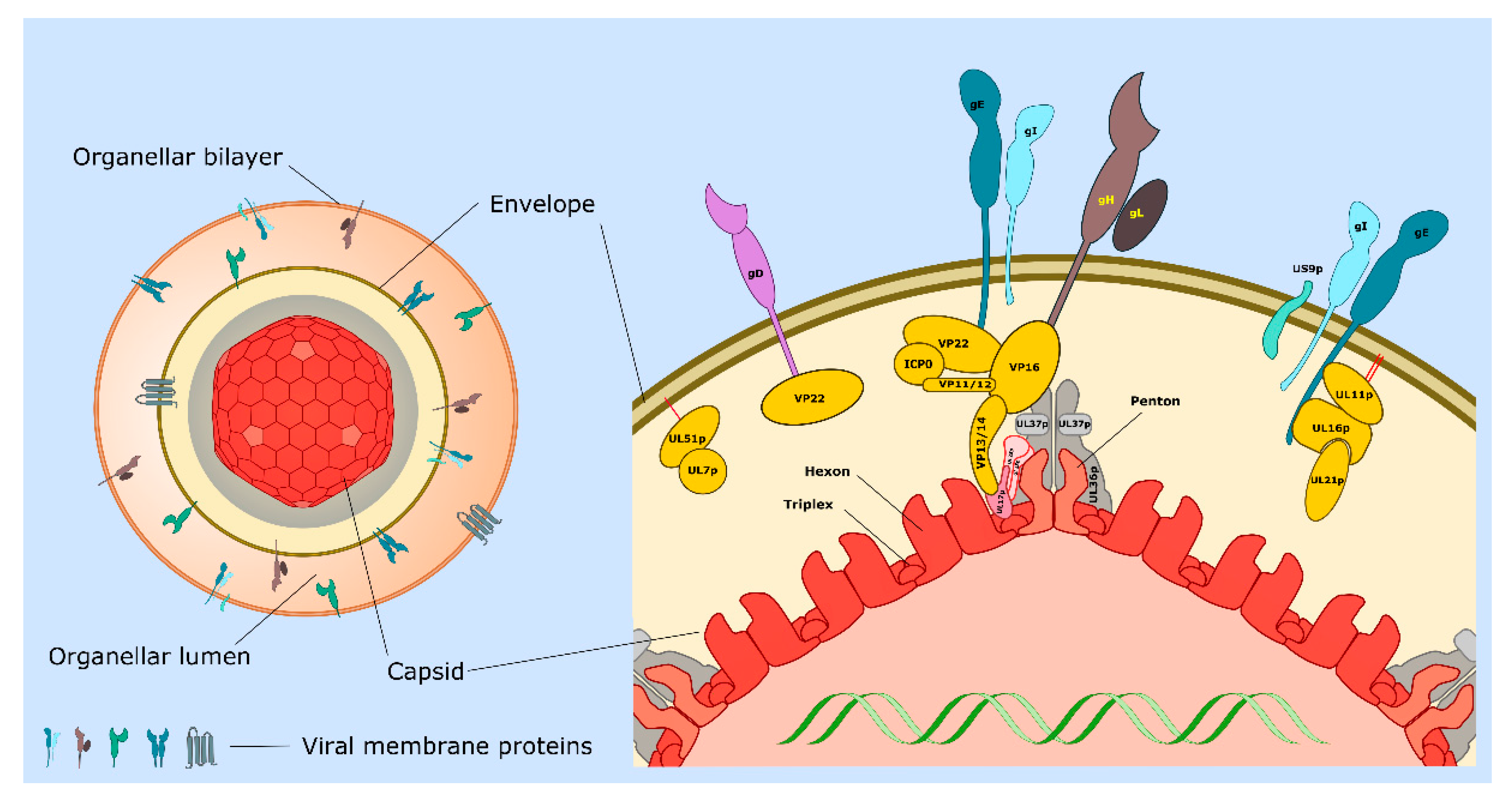
IJMS Free FullText HSV1 Cytoplasmic Envelopment and Egress
Genital herpes is an STD caused by two types of viruses - herpes simplex virus type 1 (HSV-1) and herpes simplex virus type 2 (HSV-2). What is oral herpes? HSV-1 often causes oral herpes, which can result in cold sores or fever blisters on or around the mouth. However, most people with oral herpes do not have any symptoms.
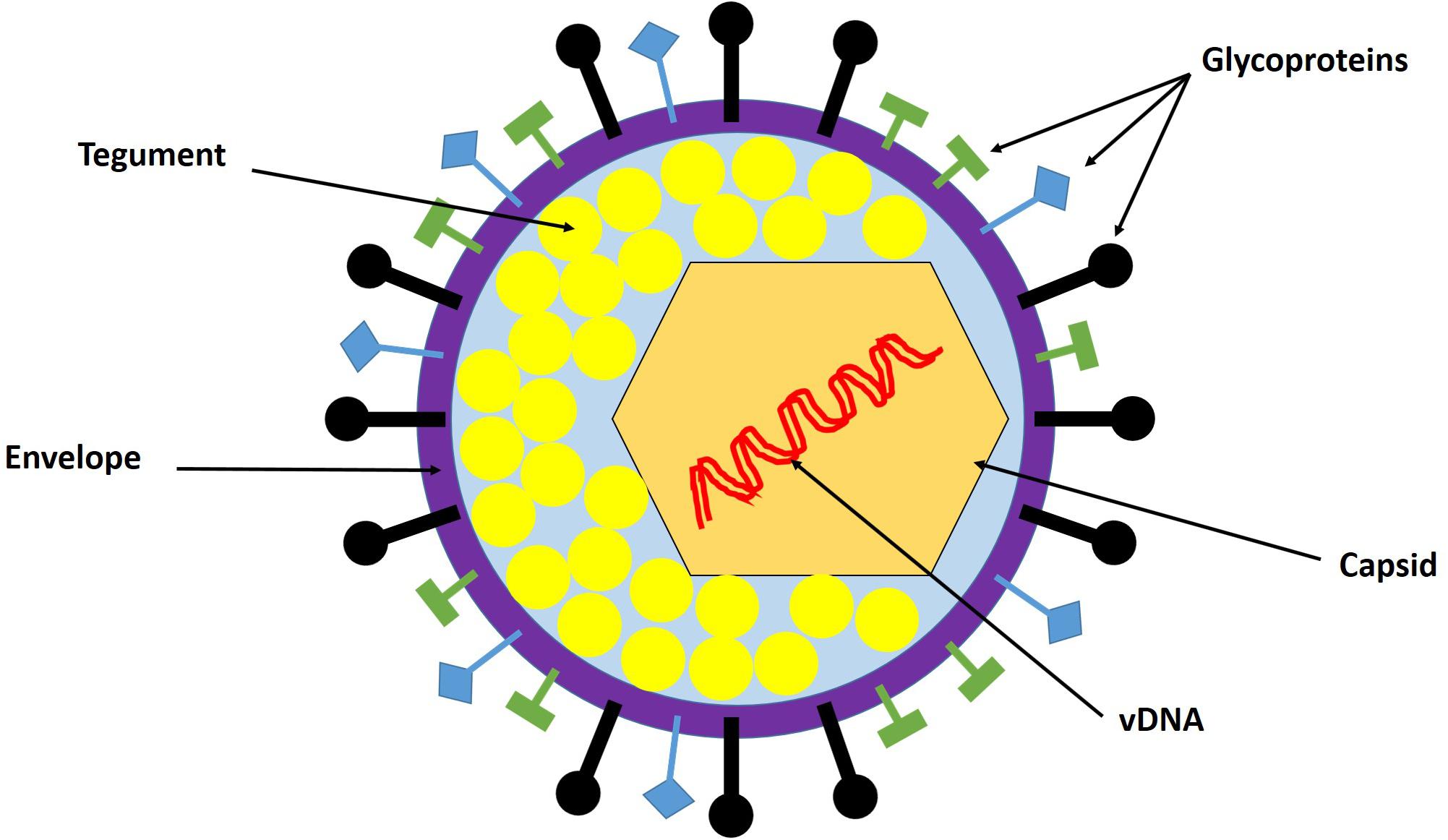
Frontiers Host Intrinsic and Innate Intracellular Immunity During Herpes Simplex Virus Type 1
Both HSV-1 mRNA and protein abundance vary between single cells. To investigate if single-cell heterogeneity is affected by infection time or virus load, we infected HeLa cells with HSV-1 and then.
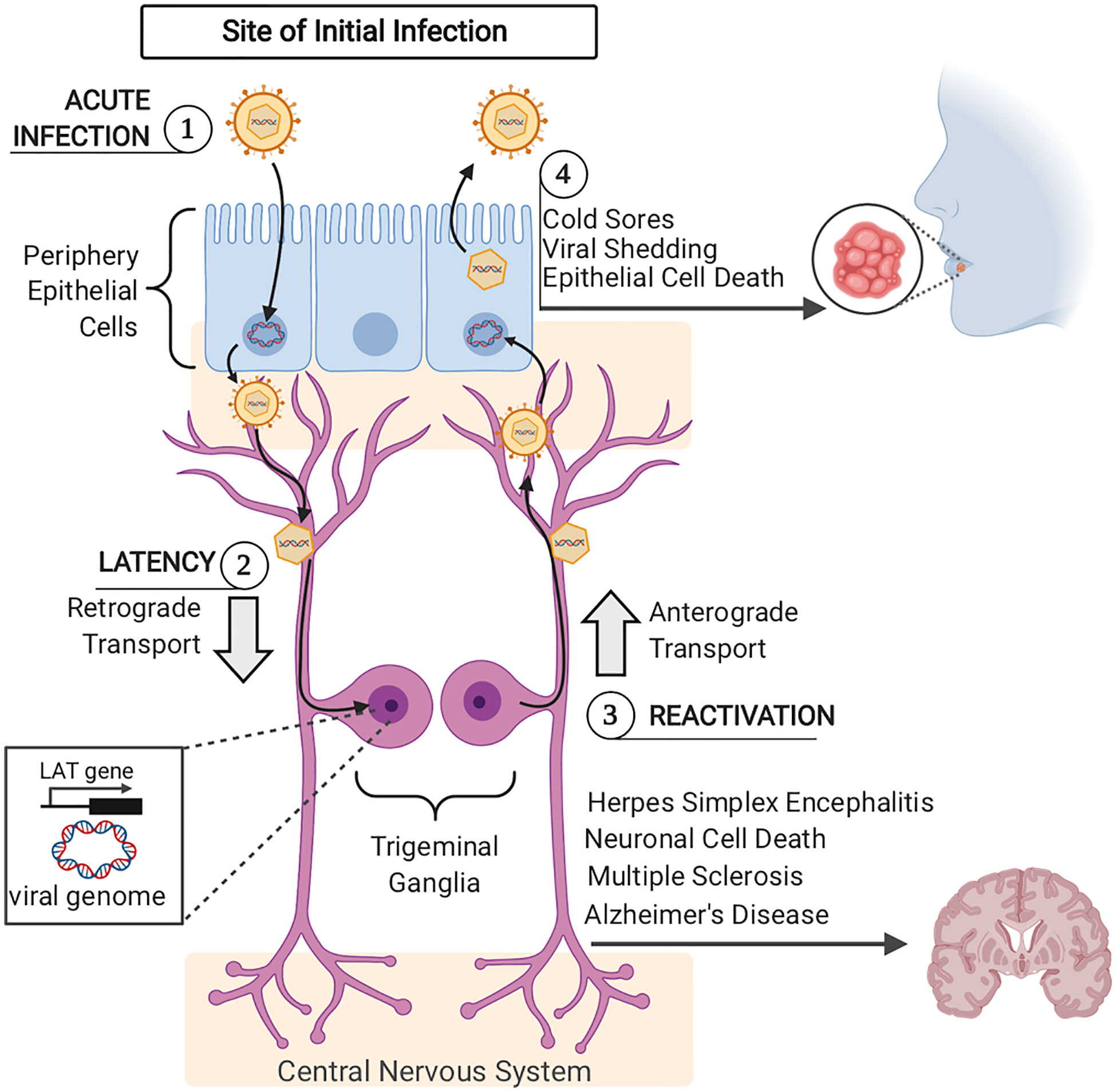
Frontiers Herpes Simplex Virus 1 Infection of Neuronal and NonNeuronal Cells Elicits Specific
Paulus, een apostel van Jezus Christus door de wil van God, aan de heiligen en gelovigen in Christus Jezus die in Efeze zijn: genade zij u en vrede va.
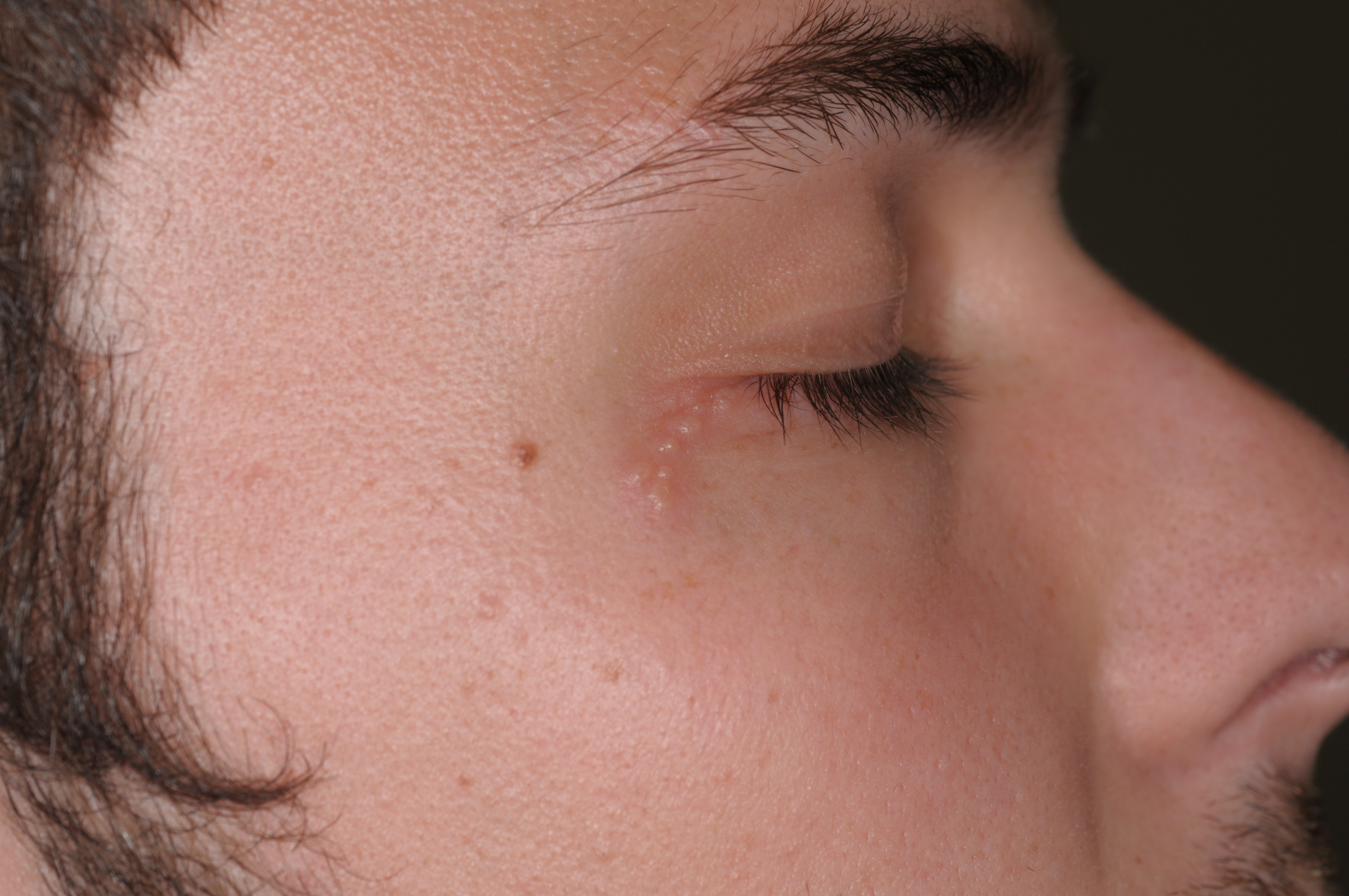
Herpes Simplex Virus Type 1 (HSV1, fever blisters, cold sores); Herpes Simplex Virus Type 2
Here the authors use chemical proteomics to identify the herpes simplex virus 1 encoded proteome in infected cells. Functional characterization of one of the nine identified proteins, designated.
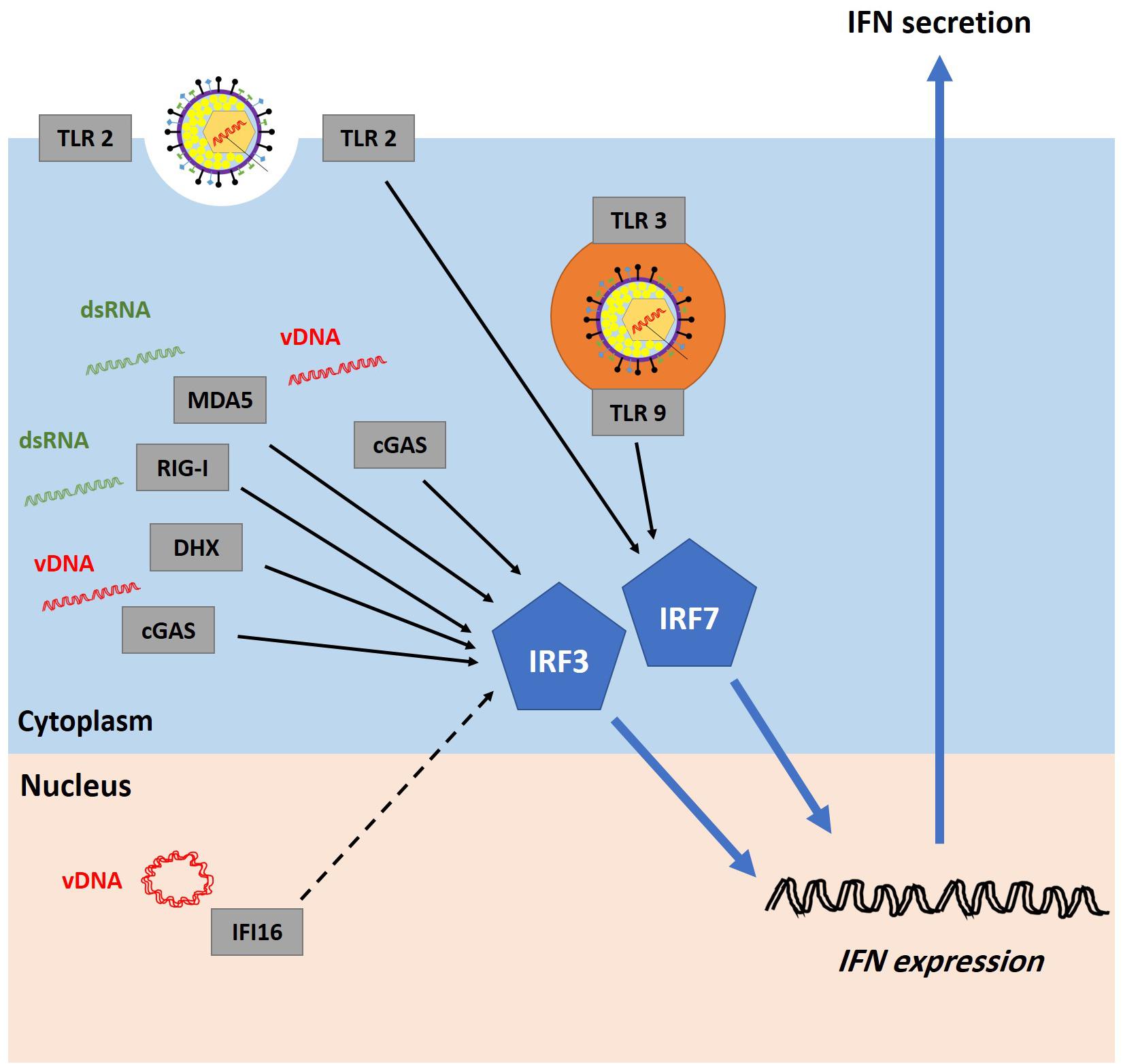
Frontiers Host Intrinsic and Innate Intracellular Immunity During Herpes Simplex Virus Type 1
There are two main types of the herpes simplex virus: HSV-1 and HSV-2. HSV-1. This type primarily causes oral herpes, characterized by cold sores or fever blisters that appear around your mouth or.